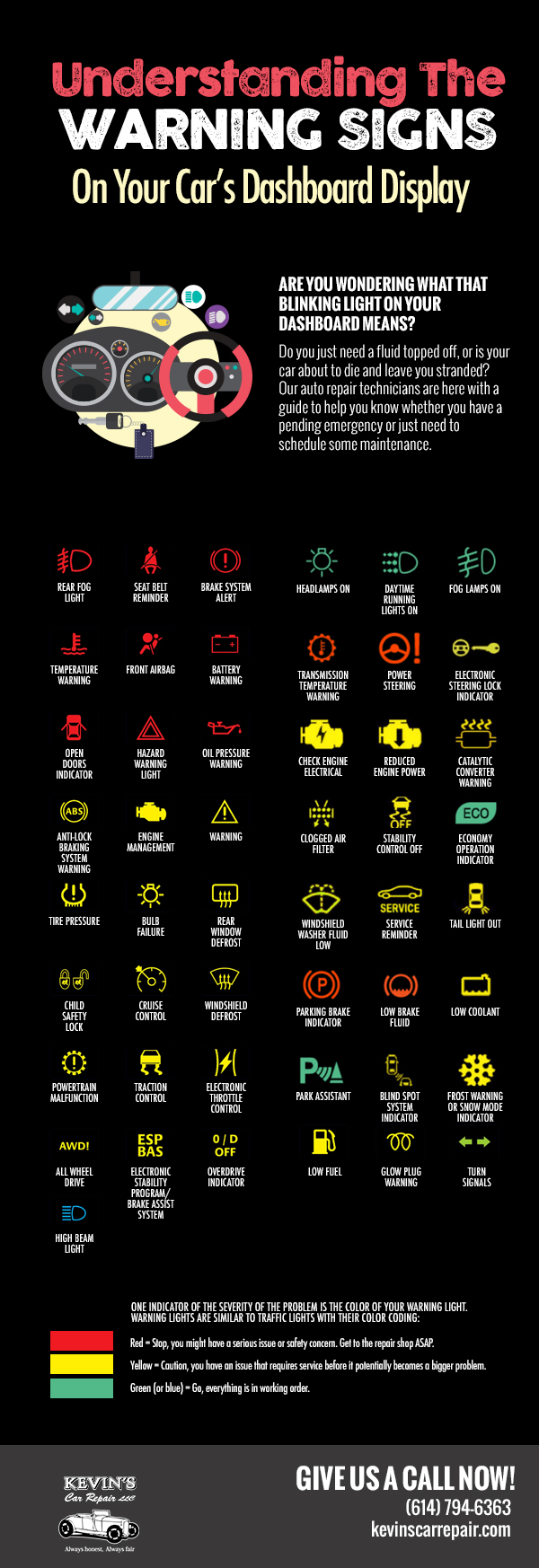Decoding Your Vehicle'S Caution Indicators: What They Absolutely Symbolize
Decoding Your Vehicle'S Caution Indicators: What They Absolutely Symbolize
Blog Article
Produced By-Sykes Alvarado
When you're behind the wheel, those glowing warning lights on your control panel can be a little bit puzzling. Do you know what they're trying to inform you regarding your auto's health? Understanding the value of these lights is vital for your security and the long life of your lorry. So, detailer following time one of those lights appears, would not you intend to decipher its message precisely and take the required actions to resolve it?
Common Warning Lights and Interpretations
Determine common caution lights in your vehicle and recognize their definitions to make certain risk-free driving.
The most normal warning lights consist of the check engine light, which indicates issues with the engine or emissions system. If this light begins, it's crucial to have your automobile examined without delay.
The oil stress alerting light indicates low oil pressure, requiring immediate interest to prevent engine damage.
A blinking battery light may suggest a faulty billing system, possibly leaving you stranded otherwise addressed.
The tire stress monitoring system (TPMS) light signals you to reduced tire pressure, influencing car security and fuel efficiency. Disregarding this might cause unsafe driving problems.
The ABS light shows a trouble with the anti-lock stopping system, jeopardizing your ability to quit promptly in emergencies.
Lastly, the coolant temperature level alerting light warns of engine getting too hot, which can result in extreme damage if not resolved promptly.
Recognizing these typical caution lights will aid you address issues promptly and maintain risk-free driving conditions.
Significance of Prompt Focus
Recognizing the typical caution lights in your vehicle is only the first step; the relevance of promptly addressing these warnings can not be emphasized sufficient to ensure your safety and security when traveling.
When a caution light brightens on your dashboard, it's your car's method of connecting a potential problem that needs attention. Overlooking these warnings can cause much more extreme issues in the future, jeopardizing your safety and possibly costing you more in repairs.
Prompt interest to cautioning lights can avoid break downs and crashes. For example, a blinking check engine light might show a misfire that, if left neglected, can trigger damage to the catalytic converter. Resolving simply click the up coming article can save you from a pricey repair service.
Likewise, a brake system alerting light may signal reduced brake fluid or used brake pads, vital elements for your safety and security when driving.
DIY Troubleshooting Tips
If you see a warning light on your control panel, there are a few do it yourself troubleshooting tips you can attempt prior to seeking specialist assistance.
The very first step is to consult your car's guidebook to comprehend what the certain caution light indicates. Sometimes the concern can be as straightforward as a loosened gas cap causing the check engine light. Tightening up the gas cap may fix the problem.
Another common problem is a reduced battery, which can activate different advising lights. Inspecting the battery connections for corrosion and guaranteeing they're safe might repair the problem.
If a caution light lingers, you can attempt resetting it by disconnecting the auto's battery for a few mins and afterwards reconnecting it. Furthermore, examining your automobile's liquid degrees, such as oil, coolant, and brake liquid, can help fix cautioning lights associated with these systems.
Final thought
To conclude, understanding your car's warning lights is essential for keeping your vehicle running efficiently and safely. By without delay addressing these signals and understanding what they imply, you can avoid pricey repair services and prospective breakdowns.
visit the following web site in mind to consult your car's manual for certain information on each advising light and do something about it appropriately to guarantee a hassle-free driving experience.
Keep informed, remain secure on the road!
